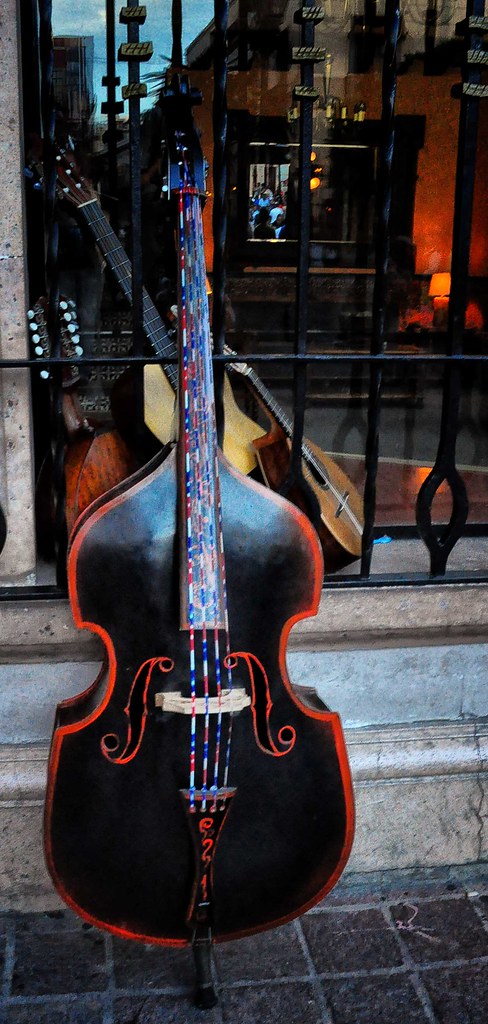 |
| Double bass. (Photo credit: Wikipedia) |
A double bass is one of the largest musical instruments you can buy and is commonly used in orchestral music and genres such as jazz.
But people who are purchasing one for the first time may wish to consider a number of factors before making an investment. For instance, what size of double bass do you intend to buy and do you have to stick to a budget?
Double basses in different price ranges are available, so musicians have the option of deciding what sounds best for the amount of money they intend to spend.
The age of the player could also influence their choice, as a three-quarter size instrument would probably be more suitable for younger people.
And the type of music you want to perform is another factor. For example, jazz musicians, in particular, are often known to favour three-quarter size double basses.
There are four main parts to the instrument.
Firstly, there is the bridge, which supports the strings and transfers vibrations to the body of the double bass.
This contains the F hole - a space on the main body of the instrument that allows sound to escape.
Double basses also contain tuning pegs similar to those on most types of guitar, which make the strings longer or shorter to get them into tune.
And finally, they include a tail spike, which allows musicians to balance the bow on the floor when playing the instrument.
Musicians can buy a brand new double bass at highly affordable prices, but some may opt to purchase a secondhand instrument.
However, if you do intend to buy a used double bass, do not worry too much about aesthetics, as the sound should be its most important quality. Indeed, the large size of the instrument means that you would be very lucky to find a used instrument that does not have at least some superficial damage to its body.
But a double bass with well-repaired cracks should not present a problem to any musician, although if it has severe cracks, it could make a strong buzzing sound when it is used.
People who are looking to buy a secondhand double bass should also look closely at whether it has any loose parts that may need replacing, such as a tuning peg.
And since this instrument is likely to be a long-term investment, make sure it is a good quality item that is not likely to fall apart any time soon.
Other practical considerations also need to be addressed. This is a very large instrument so do you have sufficient storage space for it? A double bass stand can be purchased to ensure it is stored safely and neatly.
And for those who plan to play their instrument outside of the home, it would be prudent to see whether it comes with a hard case, as this should stop it from getting damaged in transit.
Musicians should remember that they will need to keep their instrument well-maintained. For example, a double bass player will need to use rosin to make sure the bow is properly looked after.
But if prospective players take all this into account when making a purchase, they should be able to make the most of their double bass.
I am the Communications Manager of Gear4music.com. I am committed to delivering the most informative and useful articles about musical instruments and equipment.
Article Source: EzineArticles
|


